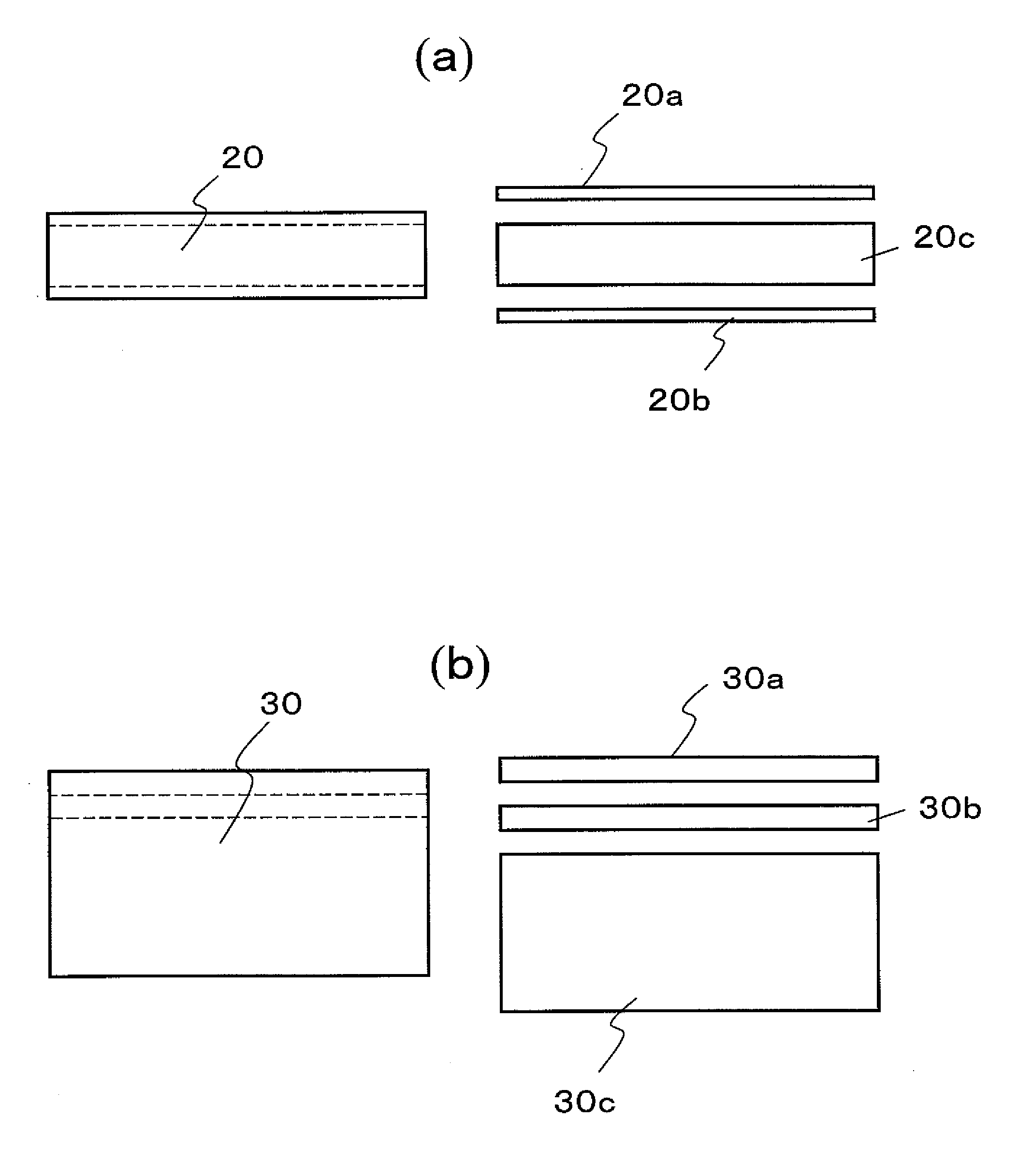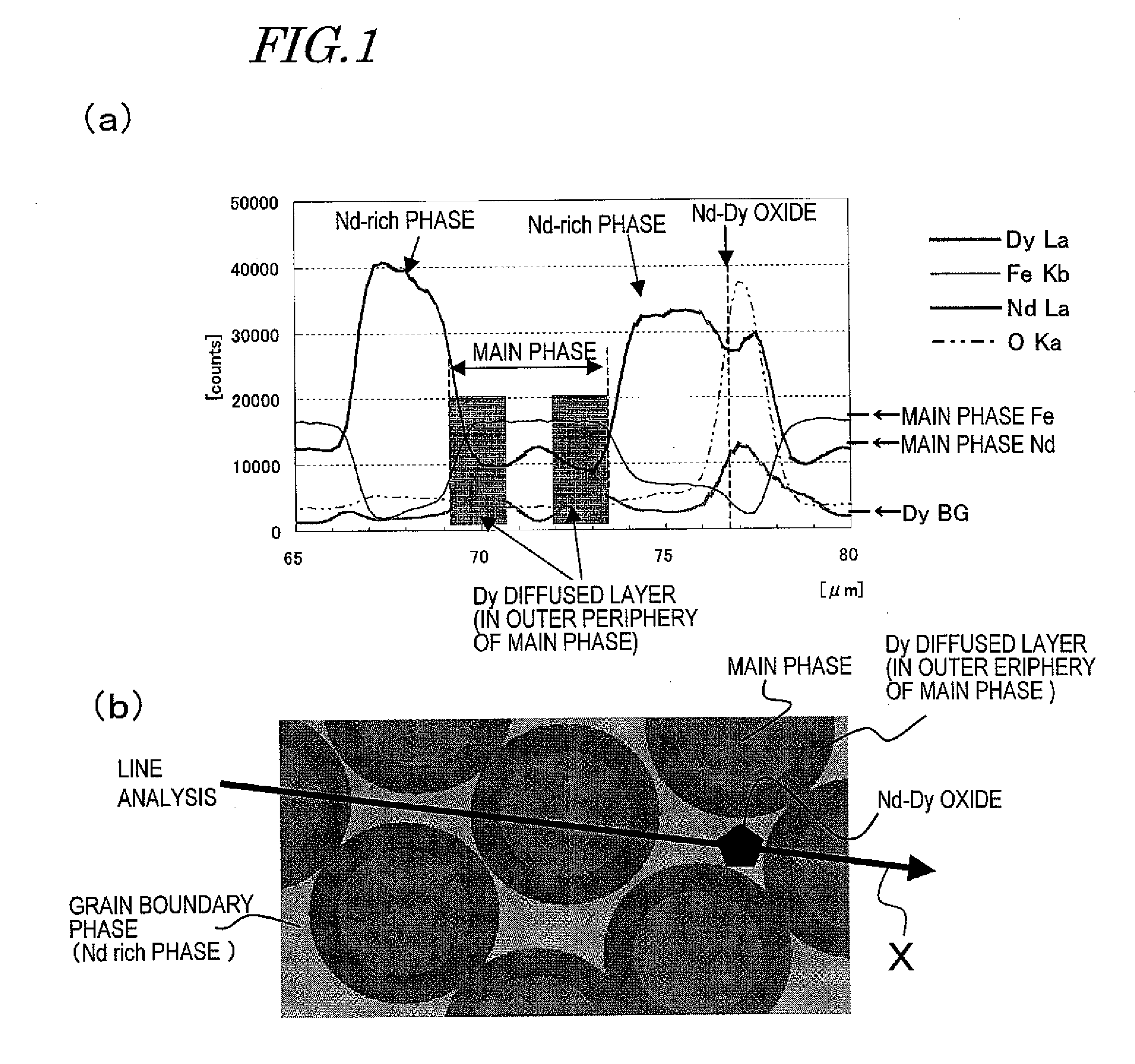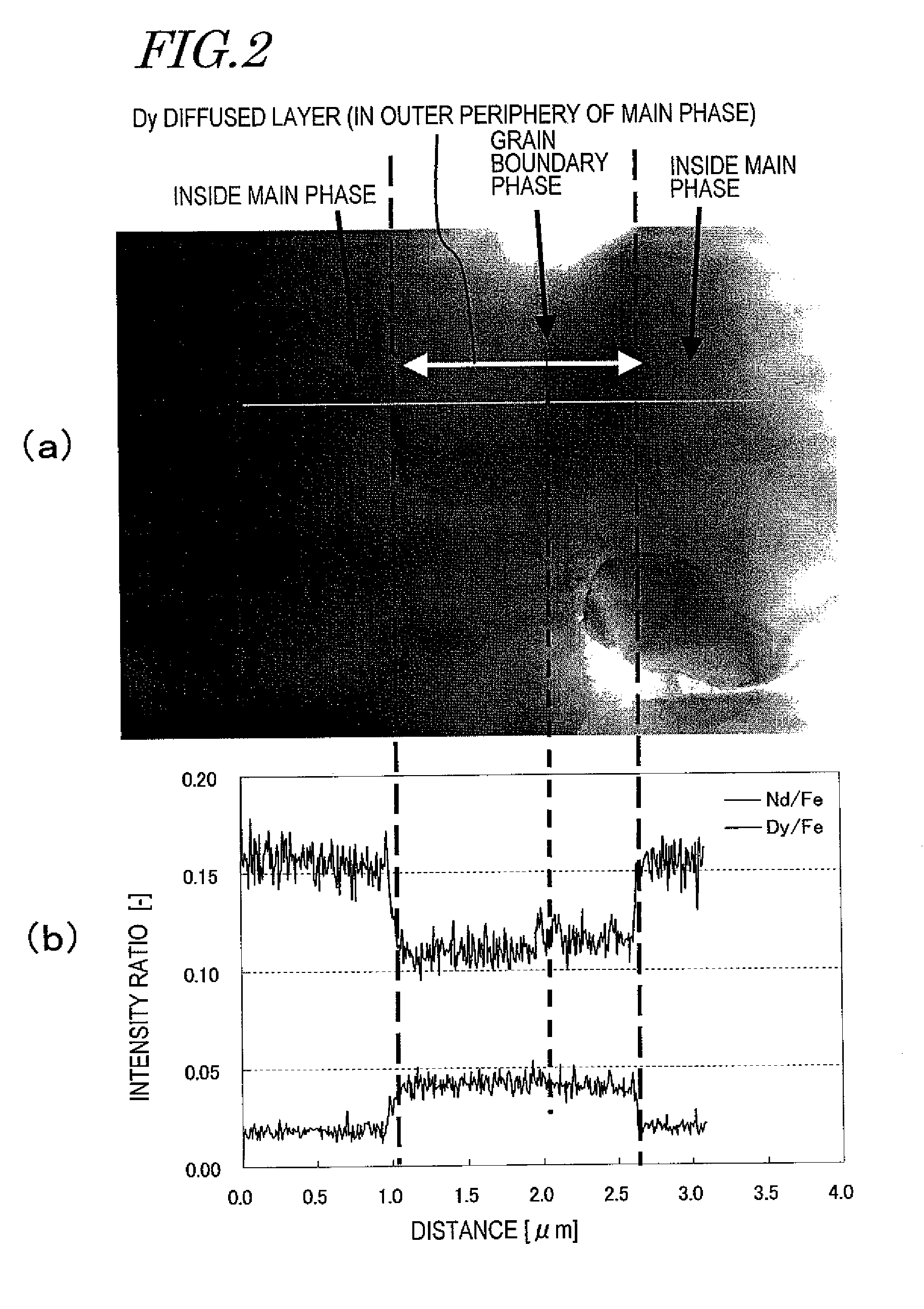R-Fe-B TYPE RARE EARTH SINTERED MAGNET AND PROCESS FOR PRODUCTION OF THE SAME
a rare earth element and sintered magnet technology, applied in the field of rare earth sintered magnets based on r-fe-b, can solve the problems of not being heated sufficiently by normal resistance heating process, not easy to obtain expected crystal structure, etc., and achieve the effect of reducing remanence br, reducing the concentration of heavy rare earth elements rh, and increasing efficiency
- Summary
- Abstract
- Description
- Claims
- Application Information
AI Technical Summary
Benefits of technology
Problems solved by technology
Method used
Image
Examples
embodiments
Material Alloy
[0153]First, an alloy including 25 mass % to 40 mass % of a light rare-earth element RL, 0.6 mass % to 1.6 mass % of B (boron) and Fe and inevitably contained impurities as the balance is provided. A portion of B may be replaced with C (carbon) and a portion (at most 50 at %) of Fe may be replaced with another transition metal element such as Co or Ni. For various purposes, this alloy may contain about 0.01 mass % to about 1.0 mass % of at least one additive element M that is selected from the group consisting of Al, Si, Ti, V, Cr, Mn, Ni, Cu, Zn, Ga, Zr, Nb, Mo, Ag, In, Sn, Hf, Ta, W, Pb and Bi.
[0154]Such an alloy is preferably made by quenching a melt of a material alloy by strip casting, for example. Hereinafter, a method of making a rapidly solidified alloy by strip casting will be described.
[0155]First, a material alloy with the composition described above is melted by induction heating within an argon atmosphere to make a melt of the material alloy. Next, this me...
example 1
[0182]First, as shown in the following Table 5, three alloys were prepared by strip casting process so as to have target compositions including Dy in 0 mass %, 2.5 mass % and 5.0 mass %, respectively, thereby making thin alloy flakes with thicknesses of 0.2 mm to 0.3 mm. In Table 5, every numerical data is expressed in mass %.
TABLE 5AlloyNdDyBCoCuAlFeDy 0%32.001.00.90.10.2balDy 2.5%29.52.51.00.90.10.2balDy 5.0%27.05.01.00.90.10.2bal
[0183]Next, a vessel was loaded with those thin alloy flakes and then introduced into a hydrogen pulverizer, which was filled with a hydrogen gas atmosphere at a pressure of 500 kPa. In this manner, hydrogen was absorbed into the thin alloy flakes at room temperature and then desorbed. By performing such a hydrogen process, the thin alloy flakes were decrepitated to obtain a powder in indefinite shapes with sizes of about 0.15 mm to about 0.2 mm.
[0184]Thereafter, 0.05 wt % of zinc stearate was added to the coarsely pulverized powder obtained by the hydrog...
example 2
[0199]First, using an alloy that had the composition shown in the following Table 10, thin alloy flakes D were made by strip casting process so as to have thicknesses of 0.2 mm to 0.3 mm.
TABLE 10AlloyNdDyBCoCuAlFeThin25.04.01.02.00.10.1balflakes D
[0200]Using those thin alloy flakes, sintered blocks were made by the same method as the one adopted in the first specific example described above. Then, by machining those sintered blocks, sintered magnet bodies having a length of 20 mm and a width of 20 mm and having their thickness varied from 3 mm through 7 mm in the magnetization direction were obtained as Prototypes #4, #5 and #6.
[0201]These sintered magnet bodies were acid-cleaned with a 0.3% nitric acid aqueous solution, dried, and then arranged in a process vessel with the configuration shown in FIG. 7. The process vessel for use in this preferred embodiment was made of Mo and included a member for holding a plurality of sintered magnet bodies and a member for holding two RH bulk b...
PUM
| Property | Measurement | Unit |
|---|---|---|
| thickness | aaaaa | aaaaa |
| thickness | aaaaa | aaaaa |
| thickness | aaaaa | aaaaa |
Abstract
Description
Claims
Application Information
 Login to View More
Login to View More - R&D
- Intellectual Property
- Life Sciences
- Materials
- Tech Scout
- Unparalleled Data Quality
- Higher Quality Content
- 60% Fewer Hallucinations
Browse by: Latest US Patents, China's latest patents, Technical Efficacy Thesaurus, Application Domain, Technology Topic, Popular Technical Reports.
© 2025 PatSnap. All rights reserved.Legal|Privacy policy|Modern Slavery Act Transparency Statement|Sitemap|About US| Contact US: help@patsnap.com



